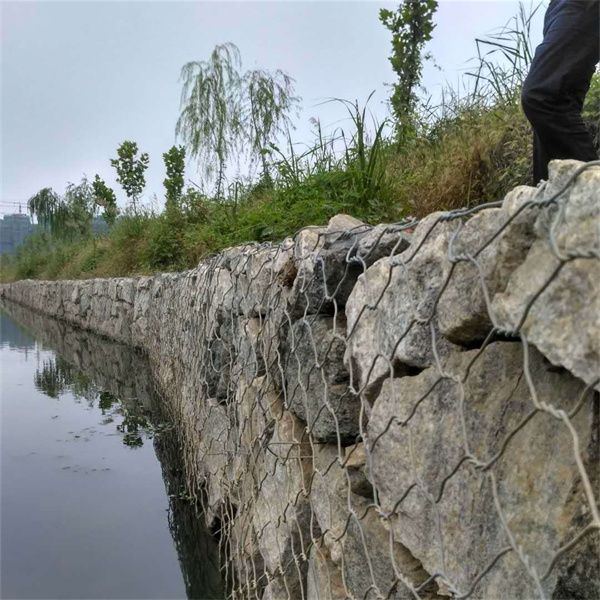ഡിസം . 25, 2024 00:30 Back to list
Durable Spiral Wire for High-Quality Gabion Construction Solutions
High-Quality Gabion Spiral Wire A Comprehensive Guide
Gabion structures have gained significant popularity in engineering and landscaping due to their versatility and durability. At the heart of these structures lies the gabion spiral wire, a critical component that ensures the effectiveness and longevity of gabions. This article delves into the features, benefits, and applications of high-quality gabion spiral wire, providing insights into why it is an essential material in construction.
What is Gabion Spiral Wire?
Gabion spiral wire is a type of wire used to hold together the individual compartments of gabion baskets. These baskets are typically made from hexagonal mesh and filled with stones, rocks, or other materials to create a robust barrier or structural support. The spiral wire itself is crafted from high tensile steel, which provides strength and flexibility, enabling it to withstand various environmental conditions.
Features of High-Quality Gabion Spiral Wire
1. Durability High-quality gabion spiral wire is resistant to corrosion, rust, and deterioration, ensuring that it maintains its structural integrity over time. Galvanization is a common treatment for gabion wire, providing an extra layer of protection against harsh weather conditions.
2. Flexibility The spiral design allows for easier installation and adjustment during construction. This flexibility makes it ideal for different kinds of applications, whether in landscaping projects or major construction efforts.
3. Strength Made from high tensile steel, gabion spiral wire can withstand significant tension and pressure. This strength is crucial for maintaining the shape and stability of the gabion structure, preventing collapse or disintegration.
4. Ease of Use Gabion spiral wire is lightweight and easy to handle, which not only simplifies the installation process but also reduces labor costs. Its design allows for quick fastening and securing of gabion baskets.
Benefits of Using Gabion Spiral Wire
- Cost-Effectiveness Compared to traditional retaining walls, gabion structures can be more affordable due to the reduced need for extensive foundations and the use of local stone for filling. High-quality gabion spiral wire adds to this cost-effectiveness by enhancing the durability and longevity of the structure.
high quality gabion spiral wire

- Environmental Benefits Gabion structures promote soil stability, reduce erosion, and enhance drainage
. By incorporating high-quality gabion spiral wire, these benefits are maximized, creating eco-friendly solutions to various landscaping and construction challenges.- Aesthetic Appeal Gabion walls made with spiral wire can be aesthetically pleasing, especially when filled with attractive stones or plants. They can blend seamlessly into natural landscapes, providing both functional and visual benefits.
Applications of Gabion Spiral Wire
Gabion spiral wire is used in various applications, including
- Retaining Walls Gabion walls are commonly used to retain soil in hilly or uneven terrain, preventing landslides and erosion.
- Riverbank Protection Gabions filled with rock can be used to stabilize riverbanks, protecting against erosion and water flow changes.
- Noise Barriers Gabion structures can serve as effective noise barriers in urban areas, reducing sound pollution while enhancing the visual landscape.
- Landscaping Designers often use gabions in landscaping projects to create decorative features or practical solutions like seating areas or raised garden beds.
Conclusion
High-quality gabion spiral wire is an indispensable component of modern construction and landscaping. Providing strength, flexibility, durability, and aesthetic options, it plays a crucial role in the effectiveness of gabion structures. As we move towards more sustainable and eco-friendly building practices, the demand for such versatile materials will only continue to grow, making gabion spiral wire an essential focus for builders and landscapers alike. Embracing this innovative material not only enhances structural integrity but also contributes to a greener, more sustainable environment.
-
HESCO Gabion Baskets for Coastal Erosion Prevention
NewsAug.22,2025
-
Longevity and Durability of River Rock Gabion Walls
NewsAug.22,2025
-
How to Integrate Gabion 3D Walls in Urban Planning
NewsAug.22,2025
-
Reno Mattress Gabion Applications in Civil Engineering
NewsAug.22,2025
-
How to Install Wire Mesh for Gabion Baskets Properly
NewsAug.22,2025
-
Best Materials for Filling a Chain Link Gabion
NewsAug.22,2025
-
Wire Mesh Thickness Impact on Gabion Wall Load Bearing
NewsAug.12,2025






